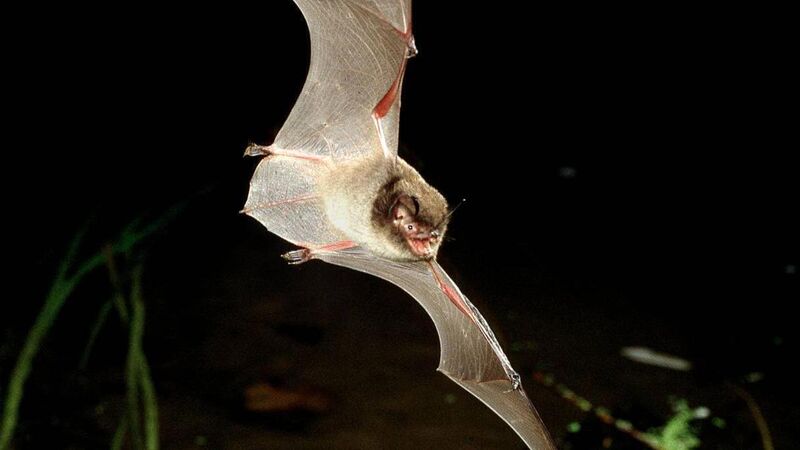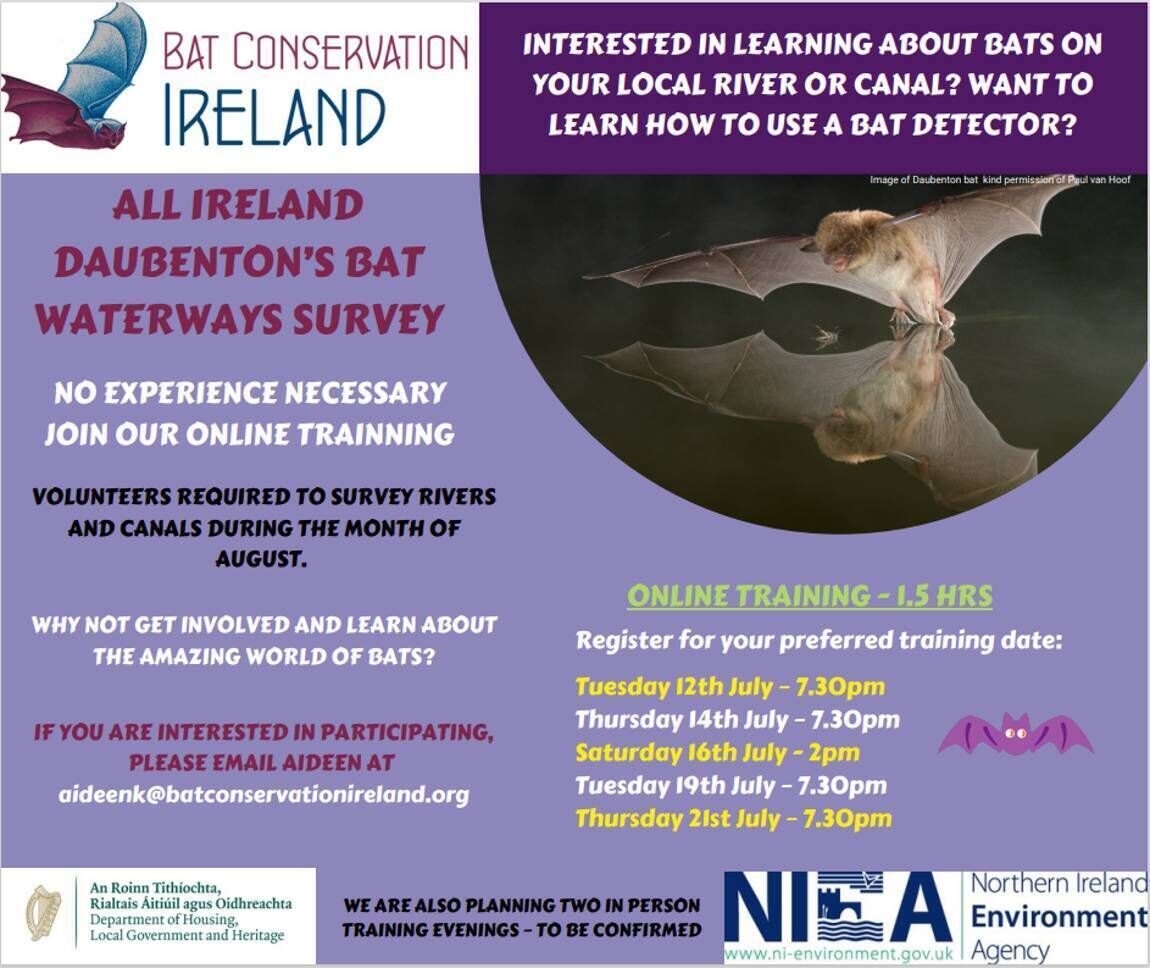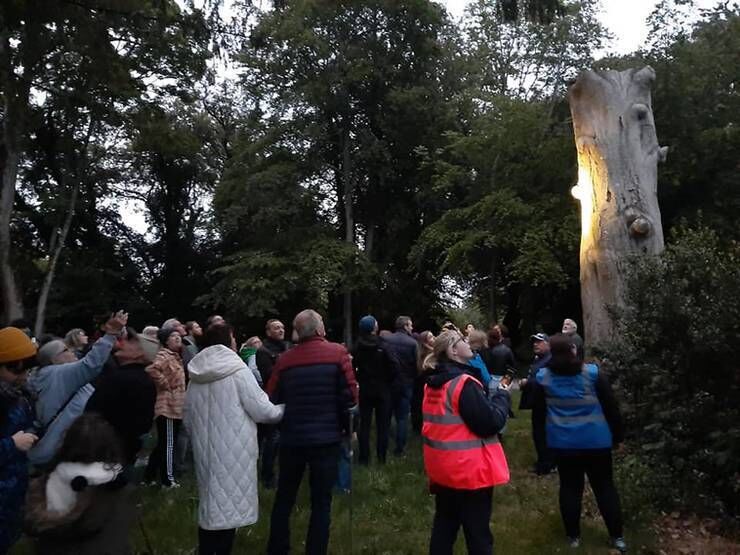Juanita Browne: enjoying the night life — tracking down the water bat

Daubenton's bat. Picture: Frank Greenway
Every August, I spend a couple of evenings walking in the darkness along a lonely canal, carrying a torch, clipboard and a small strange device that crackles like an out-of-tune radio. This doesn’t sound like much fun, but it is! I am hunting for bats.
I am one of hundreds of volunteers taking part in the All-Ireland Daubenton’s Bat Survey, run by Bat Conservation Ireland (BCI).
Daubenton’s bat gets its Irish name ‘Ialtóg Uisce’, the water bat, from spending so much time around water, flying low over rivers, lakes and canals as it picks off caddisflies, mayflies and midges. We have nine resident bat species here in Ireland, but the Daubenton’s is my favourite.
The beauty of this survey is that it takes only about 80 minutes to complete, on each of your two survey nights. And with excellent training from BCI, and a bat detector in hand, your target species is relatively easy to identify. It’s very straightforward: you visit your chosen waterway during daylight hours for a recce, and assign 10 survey points 100m apart, noting local landmarks and vegetation, lighting, etc. Then, in early August, you return after sunset to monitor the bat activity along your 1km waterway stretch.

You simply set a timer for four minutes at each survey point, use your torch intermittently to scan the surface of the water, and your bat detector to help you confirm species, and then count the number of ‘bat passes’ within the allotted time. Then you move on to your next survey point and repeat the process. Send your results back to BCI and they work their magic to produce important data on Daubenton’s activity and trends.

Bats are actually quite loud animals — it’s just that we can’t hear their sounds as they’re at a frequency higher than our ears are capable of detecting. A bat detector is a special piece of equipment that translates the sounds of bats into clicks and pulses and sounds that we can recognise — and luckily different species produce different frequencies.
The canal I survey is a popular walking site during daytime hours, but I often marvel at the fact that all these walkers probably have no idea how busy a spot it becomes after dark with wildlife.
I particularly like to bring my teenage kids, nieces or nephews along. None of them has a particular interest in nature, but the promise of hot chocolate or sweets entices them. And when they spot their first bat, they can’t help getting excited. By chance, my survey spots show increased activity as you go from 1-10, so the excitement steadily builds. Where first they’re counting just one or two bat passes, by the time we get to the last few survey spots, the numbers of bats in flight make it difficult to keep up — 120 bat passes in four minutes being our highest count.
Bat Conservation Ireland is a wonderful organisation led by dedicated scientists and they provide excellent workshops, bat walks and online training to anyone who wants to become involved in their surveys.
Click here to participate in the bat survey this August or email Aideen at aideenk@batconservationireland.org
- Juanita Browne has written a number of wildlife books, including and








